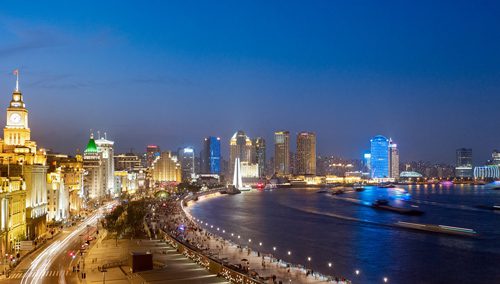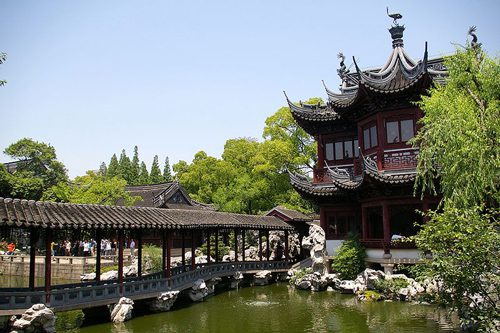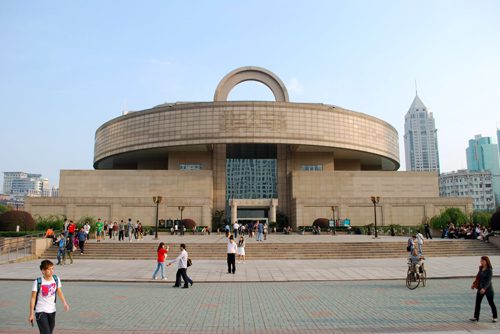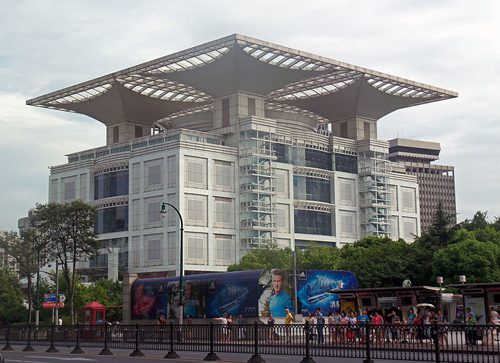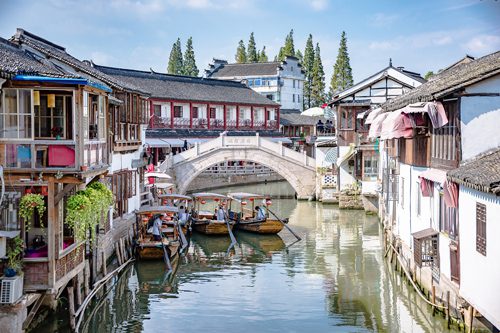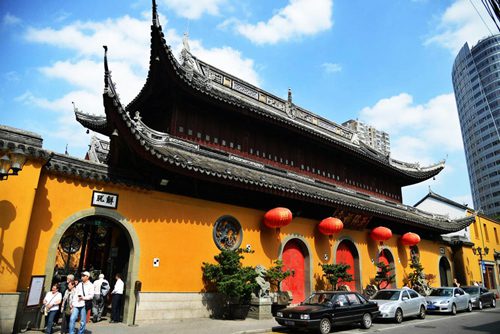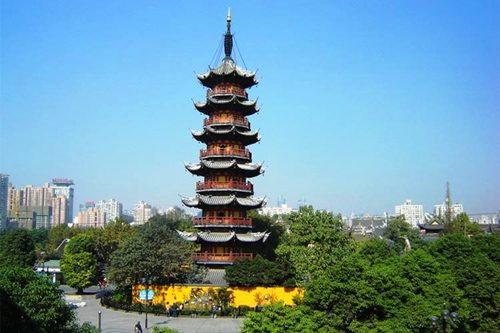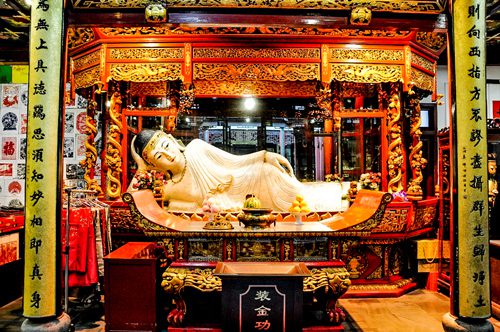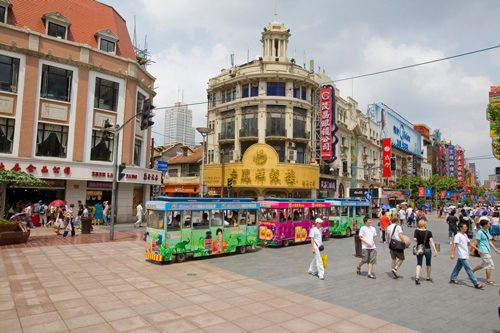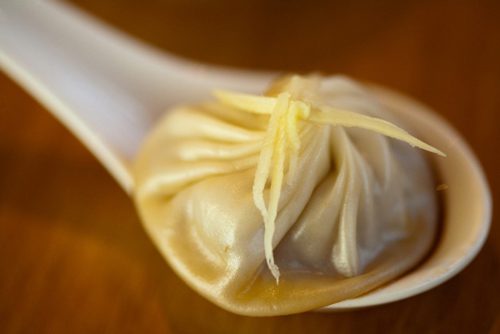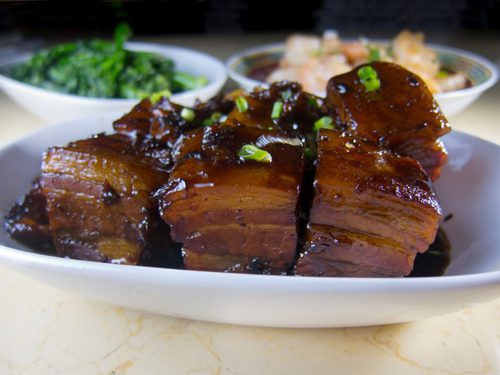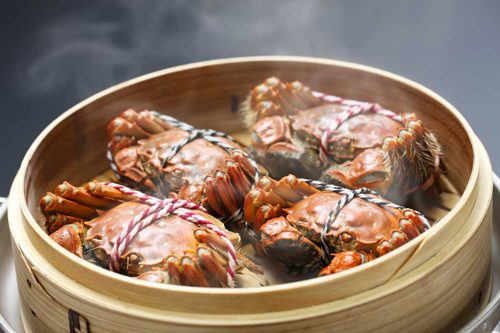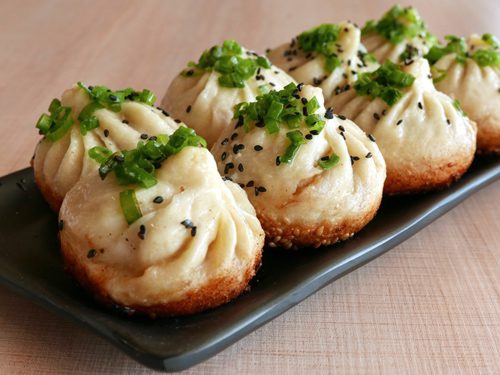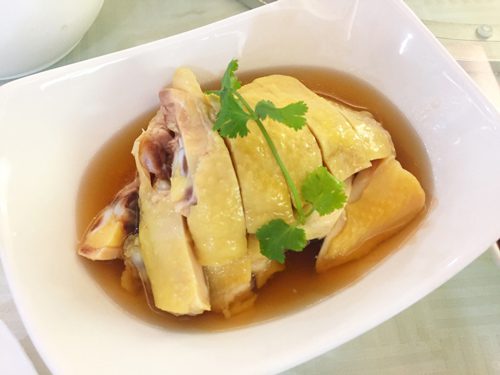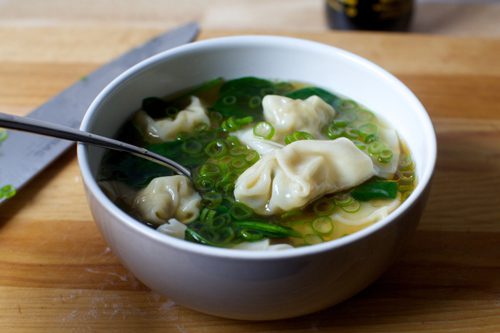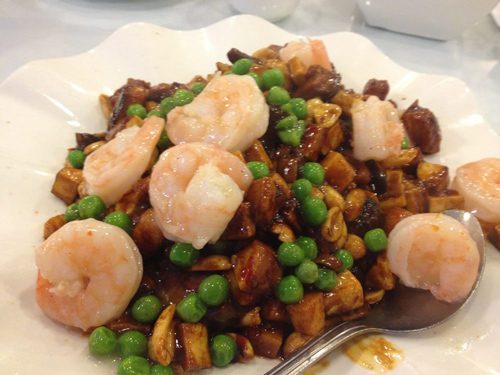Located on the banks of Yangtze River on the eastern side of China, Shanghai is considered as the largest city in China and the most populous city in the world with the population of 24 million people. Shanghai is famous for being the center of Chinese economy, culture, politics, and transportation. Shanghai is also one of the most important cargos in the world. Shanghai attracts tourists for its appealing historical sites, modern contemporary architectures, exciting shopping centers and delicious traditional dishes.
Best Time to Travel to Shanghai
To experience the finest weather, you should travel to Shanghai in spring (March to May) or autumn (September to November). Located in the subtropical zone with four distinct seasons, Shanghai has hot summers and chilly winters. Shanghai experiences considerable rainfall from June to September. The temperature may reach 32 degrees Celsius during this period and we advise that you should avoid July since it is the hottest month in the city. On the contrary, it is cold and dry during winter (December to February). The temperature can drop to 1 degree Celsius. However, it is not as cold as in Beijing or Xian since snow rarely falls.
Shanghai Travel Tips
- Metro is the cheapest and the most convenient way to get around Shanghai. Ticket machines have instruction in English, so there will be no hassle for you.
- Shanghai people, particularly the ones in hospitality industry, can speak English at a decent level, so language barrier will not be a problem.
- 42 countries including America, Australia, New Zealand, Japan, Korea and many countries in Europe can apply for 72-hour visa-free. So check if you are eligible for this policy.
What to See in Shanghai
1. The Bund

- The Bund
The Bund is considered as the symbol of Shanghai for more than a hundred year. Stretching along Huang River, it is the waterfront and used to be the trading port during the colonial era. Along the Bund, you will see the lively, dynamic and hectic life of this metropolitan city. The best way to enjoy the Bund is cruising along Huang River. You can see local people jogging, walking, dancing and practicing tai chi during at time. At dawn, Shanghai looks more splendid with towering skyscrapers and colonial buildings which are lit with neon lights. To get the panoramic view of the city, we advise that you head to an observation deck at The Oriental Pearl TV Tower or a rooftop bar in Shanghai World Financial Center.
2. Yu Garden

- Yu Garden
Yu Garden, also known as Yuyuan Garden, was built during Ming dynasty more than 450 years ago. It is one of the ancient architectures left in this cosmopolitan city and attracts thousands of tourists every year. With an area of more than 20,000 square meters, this garden is divided into six areas: Sansui Hall, Wanhua Chamber, Dianchun Hall, Huijing Hall, Yuhua Hall, and the Inner Garden. You will be delighted by elegant classic Chinese architecture with rockeries, ponds, pavilions, peaks, and towers. This garden focuses on tiny details such as carvings and sculptures rather than majestic architecture, which is the reason why Yu Garden is atmospherically rustic and tranquil.
3. Shanghai Museum

- Shanghai Museum
China is well-known for exquisite masterpieces: elegant sculpture, sparkling jades and meaningful paintings and calligraphy. Located on a famous Nanjing Road, Shanghai Museum is a perfect place to discover the quintessence of Chinese culture. Inspired by the shape of a bronze cooking vessel, this museum is an outstanding exterior of this city. It exhibits more than 120,000 pieces of historical antiques and artworks, including precious paintings, calligraphy and jade. You can understand the story behind each antique, from their historical stage, the creators and how they made it. Moreover, the dress galleries contain many handcrafts made by skillful ethnic people from 55 ethnic minorities in China.
4. Shanghai Urban Planning Exhibition Hall

- Shanghai Urban Planning Exhibition Hall
It is undeniable that Shanghai’s urban planning is majestic and splendid, especially the Bund and Maglev, the fastest train in the world. With six stories, Shanghai Urban Planning Exhibition Hall displays current and future architectural development of this city. On the first floor, the museum displays large-scale models which help travelers to understand how important attractions such as Yu Garden and the Bund look like in the past. The second floor is for temporary exhibitions, and the third and fourth floors display blueprints for Shanghai in 2020. This museum is close to Shanghai Museum; so if you want to discover Shanghai in the past, present, and future, these two places are extremely insightful.
5. Zhujiajiao Ancient Town

- Zhujiajiao Ancient Town
47 kilometers away from Shanghai, Zhujiajiao Ancient Town is considered as ‘Venice of Shanghai’. Zhujiajiao used to be a trading area where products were transported by boats and barges in Ming dynasty. Now this town is gracefully quiet and tranquil; it is a unique tourist destination in bustling Shanghai. You can see ancient Chinese architecture with small wooden houses and ancient stone bridges. Kezhi Garden, Bei Dajie (North Street), Fangsheng Bridge and Yuanjin Buddhist Shrine are must-see attractions when visiting this town. Taking a traditional gondolier-style boat along Zhujiajiao, you will feel like immersing in an exquisite Chinese painting.
6. Jade Buddha Temple

- Jade Buddha Temple
Jade Buddha Temple is an active religious site with more than 70 monks living there. The construction of this temple lasted ten years from 1918 to 1928. It was inspired by the architecture of Song Dynasty – symmetric hall, upturned eaves and vibrant walls. There are two precious jade Buddha statues in this temple – a sitting Buddha and a reclining Buddha. They were imported from Burma to Shanghai in 1882 and have been well-preserved until now. They are only appreciated through glass and you can see that they are skillfully carved with exquisite lines. There is a vegetarian restaurant near the temple; visitors often come there for lunch after enjoying the temple’s tranquil atmosphere.
7. Longhua Temple

- Longhua Temple
Built in 242 AD, Longhua Temple is the largest and the oldest temple in Shanghai. Originally, there were 13 pagodas in Longhua Temple complex, but now only Longhua Pagoda remains intact. Longhua Pagoda was made of brick, has 7 stories and represents the Song-dynasty style. With an area of more than 20,000 square meters, the complex contains five halls: the Maitreya Hall (Mile Dian), the Emperor of Heaven Hall (Tianwang Dian), the Grand Hall of the Great Sage (Daxiong Baodian), the Three Sages Hall (Sansheng Dian), and the Abbot’s Hall (Fangzhang Shi). Off the central axis are Bell Tower and Drum Tower with a precious 3.3-ton bronze bell.
What to Do in Shanghai?
Cruise along Huang River and enjoy The Bund’s view
Whether you want to go shopping, immerse in nature or discover historical sites, Shanghai has everything you expect.
The Bund is considered as the symbol of Shanghai for more than a hundred year. Stretching along Huang River, it is the waterfront and used to be the trading port during the colonial era. The best way to enjoy the Bund is cruising along Huang River. You can see local people jogging, walking, dancing and practicing tai chi during at time. At dawn, Shanghai looks more splendid with towering skyscrapers and colonial buildings which are lit with neon lights.
Discover Shanghai’s history and culture through scenic spots and rustic museums

- Jade Buddha Temple
Shanghai is the perfect combination of traditional and modern architecture with many attractions:
- Yu Garden: Yu Garden, also known as Yuyuan Garden, was built during Ming dynasty more than 450 years ago. This garden focuses on tiny details such as carvings and sculptures rather than majestic architecture, which is the reason why Yu Garden is atmospherically rustic and tranquil.
- Zhujiajiao Ancient Town: Considered as ‘Venice of Shanghai’. Zhujiajiao used to be a trading area where products were transported by boats and barges in Ming dynasty.
- Shanghai Museum: This museum exhibits more than 120,000 pieces of historical antiques and artworks, including precious paintings, calligraphy, and jade.
- Jade Buddha Temple: Jade Buddha Temple was inspired by the architecture of Song Dynasty – symmetric hall, upturned eaves and vibrant walls. There are two precious jade Buddha statues in this temple – a sitting Buddha and a reclining Buddha.
- Longhua Temple: Built in 242 AD, Longhua Temple is the largest and the oldest temple in Shanghai. Originally, there were 13 pagodas in Longhua Temple complex, but now only Longhua Pagoda remains intact.
Watch a live performance at Shanghai Circus World
With a unique architecture of a gorgeous golden vault, Shanghai Circus World is equipped with state-of-the-art lighting and sound facilities so that they are able to organize domestic and international competitions here. There are many live performances from local to international performers in this place – you can enjoy singing, dancing, acrobatics, and circus shows here. Though this place can seat an audience of more than 1500 people, it is recommended that you buy tickets in advance in order not to miss any desirable performance.
Go shopping in Nanjing Road

- Nanjing Road
Nanjing Road is a popular pedestrian street in Shanghai where you can find literally everything – from souvenirs, clothes, jewelry to restaurants, street vendors and coffee shops where you can rest after long hours of shopping. While Eastern Nanjing Road is covered with Western-styled restaurants and café, the West is the shopping heaven with fashion boutiques from Gucci, Louis Vuitton, Dolce & Gabbana, Dior, Versace, Miu Miu, etc.
What to Eat in Shanghai
Although Shanghai does not belong to China’s Eight Major Cuisines, the foods here are worth trying as they combine many intriguing aspects from surrounding provinces. Shanghai cuisine is considered as ‘sweet and oily’ which is influenced by Jiangsu and Zhejiang cuisines. Shanghai’s chefs use more sugar than the other regions of China.
1. Xiaolongbao

- Xiaolongbao
Pork dumpling (xiaolingbao) is Nanjing’s specialty. It is a kind of steamed bun served in traditional bamboo steam baskets. But don’t confuse it with the other type of dumping because xiaolingbao is ‘soup dumpling’. The chefs cleverly hide the soup which is made from pork skin gelatin inside the dumpling wrapper. Shanghainese have adjusted this food a little bit by adding some sugar to the filling.
2. Hong shao rou (Red-braised pork)

- Red-braised pork
This food is relatively fatty since it contains pork belly. The meat is mixed with ginger, garlic, pepper, sugar, soy sauce, and Shaoxing wine. It is braised until the fat is gelatinous and the sauce becomes sticky. Hong shao rou is usually served with white rice.
3. Da Zha Xie (Steamed Hairy Crab)

- Steamed Hairy Crab
The crabs are tied with ropes and steamed in bamboo baskets. The main purpose of this dish is to maintain the natural flavor of this nutritious seafood. The crabs are succulent and tender. This food is the most delicious in autumn. Don’t be confused if you don’t know how to eat it, ask a waiter for help.
4. Shengjianbao

- Shengjianbao
Shanghai cuisines are all about pork dumplings. Shengjianbao is fattier than the normal dumplings since the bottom of the bun is pan-fried. Then, it is steamed to ensure a sticky top. When it is steamed, the pork filling is melted, which make the dumpling wrapper sweeter and juicier. It is somewhat a kind of soup dumpling, but Shengjianbao will create more appealing melt-in-the-mouth effects, especially when the weather is chilly.
5. Drunken Chicken

- Drunken Chicken
Drunken Chicken is one of the best cuisines in Shanghai. The chicken is poached with some seasonings such as scallions, ginger, and salt. Then it is marinated in Chinese wine sauce; this method makes the skin more crunchy and delicious. Drunken Chicken is served chilled and it has become a favorite food of those who visit Shanghai due to its unforgettable taste.
6. Mini wontons in soup

- Mini wontons in soup
Ground meat, shrimps, and peppercorns are mixed and rolled in rice wrappers to make wontons. The broth is rich and sweet; the Shanghainese often add cilantro, dried shrimp and strips of egg to the broth. You can add vinegar or chili for stronger flavor. This food is usually served for breakfast, but you can try it for night-time snack as well.
7. Ba Bao La Jiang (Spicy Eight-treasure)

- Ba Bao La Jiang
The name of this food is taken from the number of ingredients. Pork, tofu, mushrooms, snow peas, chestnuts, baby corn, chili, and peanuts are used to create a dedicated, crunchy and spicy dish. Vegetables and meat are stir-fried with seasonings, bean sauce, and chili sauce. You can eat Ba Bao La Jiang either with rice or noodles.
Famous restaurants in Shanghai
- Old Shanghai Restaurant: NO.242, Fuyou Road
- De Xing Restaurant: No.239, West Gaoqiao Road
- Lv Bo Lang Restaurant: No.115, Yuyuan Road
- Blue Sky Rotational: No. 161 Changle Road
- Xiaoshaoxing Restaurant: No.118, South Yunnan Road
- Wang Bao He Restaurant: No.603, Fuzhou Road
- Yershari Xinjiang Style Restaurant: No. 106, Nandan East Road, Xuhui District

